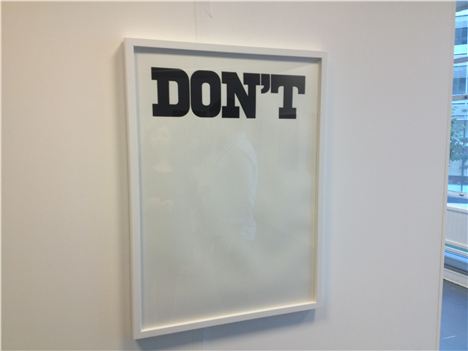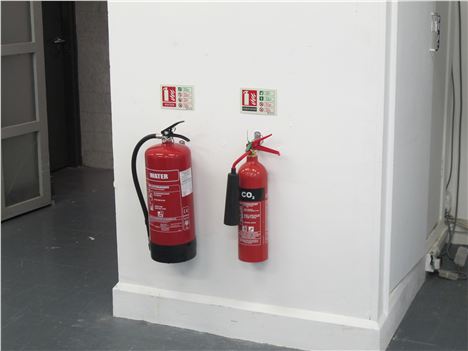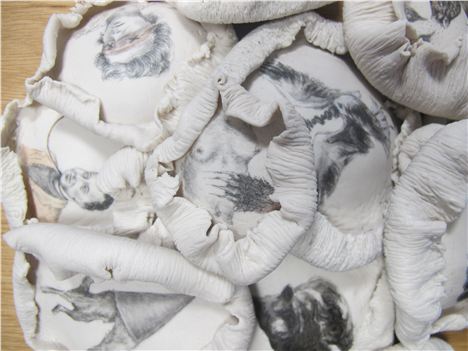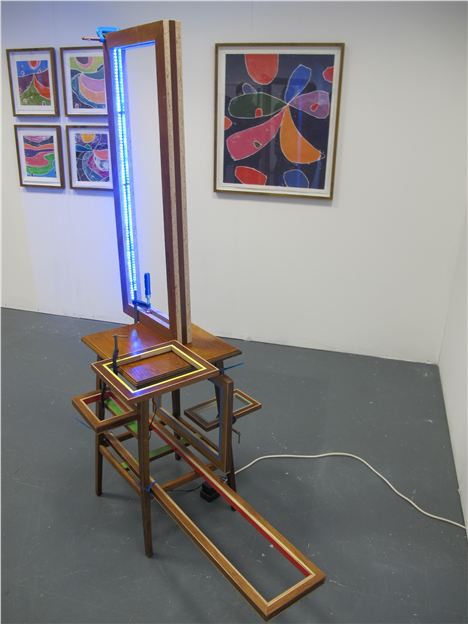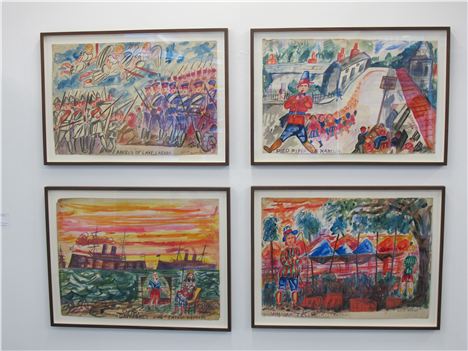THE GALLERY owner of Seventeen Gallery said it without batting an eyelid, without any apparent irony, rather with a weary certainty of our scepticism.
'She uses traditional craft techniques to produce work which may look like a load of crap'.
There was much to infuriate and annoy in The Manchester Contemporary. Much to make you clench your fists and rage. There was also so much to enjoy and adore, so much to lift the spirits.
On the floor there were three twisted carpet grips (see main picture above). It looked like they'd been left by mistake during the fit-out.
Instead it was art.
They were the work of Susan Collis and while looking like 'crap' they'd been expensively, coated, polished and worked with gold leaf and other precious materials. Apparently this had taken hours and hours.
The gallery price was £3,000. On the wall was a piece of wood with screwheads protruding made from white gold. That was £6,000.
The group I was going round with would never have known anything about this hidden value unless the gallery owner with the long face and the lugubrious air of Eeyore hadn't told us.
A couple of people genuinely thought it all a joke being played and there was some double-bluff cleverness going on.
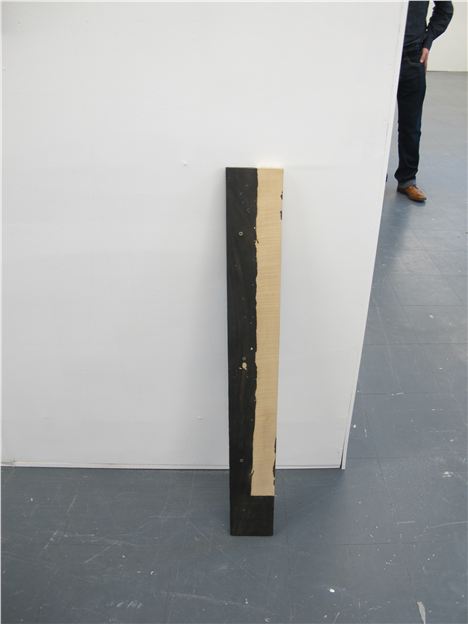 The little screws here are made of white gold
The little screws here are made of white gold
I tried to think it through.
Was Collis saying that even the most mundane objects can have real beauty - a trite sentiment. Or was she saying they don't have beauty until it is brought out by being made special in some way, either through technique or a trick of the eye?
The lack of written explanation about artists' ideas is the most infuriating and bone-idle habit of the avant-garde. Throughout The Manchester Contemporary I wanted to have something to work with. I wanted to have an idea why in this instance the artist thought gilded carpet grips should grip me. I wanted a leg-up, an assist, just some bloody help. It all seemed such a bother for so little result.
Eeyore, the gallery man, was a poor provider of any such assistance. When I asked him, he sort of shrugged and said it was up to me.
There is much to infuriate and annoy in The Manchester Contemporary. Much to make you clench your fists and rage.
There is a Swedish video of a man walking through various cities wearing a different striped t-shirt everyday, there is agitprop stuff such as blank pieces of paper bearing single words such as 'Don't'.
I passed two fire extinguishers and honestly, for a minute, paused and thought, are they..., yea they are part...are they?
But that is just one side of The Manchester Contemporary. Because, there is also so much to enjoy and adore, so much to lift the spirits.
In the International 3 section the detail in Rachel Goodyear's disturbing images that mix the commonplace with the disturbing re-pays close examination.
One work, either on rubber or leather I think, looks funghal, but contains exquisite images that mix folklore, mythology, and contemporary fantasy novels. There is perhaps something of Goya about them, maybe the Spanish artist's 'Sleep of Reason' or 'Los Caprichos'.
They also carry for me that most subjective of qualities, beauty.
Maybe I contradict myself but because of the beauty and the obvious craftwork, a written explanation was less necessary. Although my-oh-my I still would have liked one, a long one.
Other works I equally adored on my trip around the show are those of Iain Andrews' fleshly, invigorating layerings of paint to represent the human condition in Man&Eve Gallery - truly stunning - and Michael Samuel's entertaining and impressive furniture-like pieces in Rokeby Gallery.
There was even something to be said for the naive but delightfully vivid paintings of historical and fairy-tale themes by the late-David Burton in the Rob Tufnell Gallery.
There was a lot to take in at The Manchester Contemporary.
But if you wanted to gain an insight into what the show's catalogue called 'critically engaged contemporary art' The Manchester Contemporary was a good place to start. And buy. It was all for sale too.
It was also an opportunity for interior debate as you glided the galleries (carrying a little core of shame that maybe you were not quite clever enough to get it).
I, as an art-lover of course, pondered lofty themes, probably scratching my chin and sighing frequently.
I thought about the fragmentation of contemporary art, its flight from being accessible to a broad public, and its retreat into a world that seemingly spins around its own self-reverent sun, yet is capable of transcendent moments of beauty.
Maddening occasionally, confusing frequently, uplifting occasionally, fascinating absolutely.
The Manchester Contemporary finishes Sunday 30 September and is located at Quay House, Quay Street, Manchester. Admission free.









